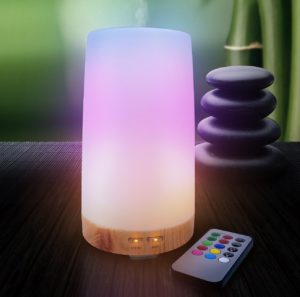 Today is December 30th, my sister’s birthday and New Years Eve eve. It seems like a good time to say goodbye to 2020. It wasn’t all bad and there have been some extraordinary moments, but this has been a tough year for many of us. Erin and I learned so much about how to make and keep this small business viable when all of the rules were changed overnight. She made soap, I sewed, we learned more about keeping bees and we coped. Maureen and I experimented with all kinds of things at CFIW and I gained some new and interesting perspective on what it means to live this life. The experience of living during a pandemic has been instructive. I really hope that I am learning the lessons that I need to from all of this mess. I am thankful for my dear friends and family that sustain me. The gratefulness that I feel to those who supported our small business venture by choosing to shop locally is unbounded. Be well and Happy New Year!
Today is December 30th, my sister’s birthday and New Years Eve eve. It seems like a good time to say goodbye to 2020. It wasn’t all bad and there have been some extraordinary moments, but this has been a tough year for many of us. Erin and I learned so much about how to make and keep this small business viable when all of the rules were changed overnight. She made soap, I sewed, we learned more about keeping bees and we coped. Maureen and I experimented with all kinds of things at CFIW and I gained some new and interesting perspective on what it means to live this life. The experience of living during a pandemic has been instructive. I really hope that I am learning the lessons that I need to from all of this mess. I am thankful for my dear friends and family that sustain me. The gratefulness that I feel to those who supported our small business venture by choosing to shop locally is unbounded. Be well and Happy New Year!
Is It Safe to Diffuse Essential Oils in a Public Place?

People just love scent. The candle, air freshener and essential oil industries are booming for this reason. Essential oils can be used to scent and clean the air and can have therapeutic benefits. Those who love essential oils are eager to share their benefits and pleasing aspects, but is it safe to diffuse in public spaces, offices and classrooms? To answer that question we need to understand some things about what essential oils are and how they work.
The use of essential oils for their therapeutic properties is Aromatherapy and the practice of Aromatherapy falls under the umbrella of Herbalism. Herbalism is the use of plants as medicine to support our health and wellbeing. When we use essential oils we are using one of the most potent and concentrated forms of plant medicine. We cannot separate the therapeutic effects of essential oils from their inherent scents. And this is the concept that needs to be understood when diffusing essential oils. When we release the volatile molecules into the air and smell them we are influencing our bodies in some way or other.
Not everyone reacts the same way to the components that make up essential oils. If you choose to diffuse essential oils in the office or classroom it is important to think about a few things beforehand. People can be allergic to essential oils because, though they don’t contain proteins, they do contain haptens which bind with proteins in the body where they can trigger an allergic response. Some folks are just very sensitive to scents and can suffer from headaches caused by exposure to natural and/or synthetic aromas. While some essential oils can be known for their particular effects, there are people who can have idiosyncratic reactions to a specific oil. For instance, lavender is considered to be a calming oil but for some it is a stimulant. And lastly, essential oils can interact with medications, making them more or less effective depending on the combination.
With those things in mind, now what? Well you can ask permission. If you are a classroom teacher you can ask for parental permission. You can ask your boss or co-workers if having a diffuser running would bother them. If people don’t want to partake then it is important to respect their wishes and know that you still have options. You may be able to wear aromatic jewelry, a scented oil or carry a personal inhaler. To clean classroom air you may be able to use the diffuser when children are not in the room.
Essential oils are vastly helpful to us for a variety of uses and purposes. Responsible and educated use can go a long way in furthering the effectiveness and acceptance of Aromatherapy. So, is it safe to diffuse essential oils in a public space? In my opinion, the answer is no, it isn’t safe nor is it appropriate to diffuse essential oils at therapeutic levels without prior consent or knowledge. For guidelines regarding safe use of an ultrasonic diffuser see my post called Using a Diffuser.
Autumn 2020

The leaves are turning and the nights are getting colder. We are getting ready to tuck the garden in. The horses are looking like wooly mammoths and we are preparing for the change of the season. Normally we would be starting our fall craft fairs next week, but there is nothing normal about this year. All of our fall shows were cancelled. We have one intrepid group that is trying a virtual craft fair for the first time and we are excited to be included in that venture. Check out the Ayer Cultural Councils FB page for their Virtual Craft Fair information.
We will be looking forward to adding some new ways to connect with folks. Center for Inner wellness is undergoing a shift and we wish them well in their future endeavors. Emily Smith will continue there with SNLaw. We have some ideas for the space at 26 Main Street including a regular Pop Up Shop, virtual classes and creative get togethers. I have been looking at getting my You Tube Channel set up so that I can share educational videos on a variety of topics. We will share the links here and on FB and Instagram as they become available. We hope to connect with you all in the near future. Be Well! Kay
Dream Pillows

Have you seen the dream pillows that I make? They are small, portable and easy to slip inside your pillowcase or keep next to your bed. I construct them from durable upholstery fabric and I fill them with flax and jasmine rice. They contain a convenient pocket for holding small items charged with intention to bring dreams to fruition. The dream pillow works on the same concept as traditional herbal pillows in which herbs were placed in cloth sachets to influence dreaming and to aid sleep. You can place herbs, a cotton ball with a drop or two of an essential oil, tumbled stones, a talisman, a hand written intention or an image into the pocket. The pillow can even be infused with Reiki. The side pocket allows items to be changed as needed. The herbs and other items can be used in any combination you desire to foster relaxation and peace of mind, to support the attainment of a goal or to manifest specific results. To learn more about herbal combinations and more about dream pillows see Making Herbal Dream Pillows by Jim Long, Storey Books, 1998. For more about using tumbled stones or crystals read The Crystal Bible by Judy Hall, Godsfield Press, 2003. To choose a complementary essential oil consult Aromatherapy for Healing the spirit by Gabriel Mojay, Gaia Books, 2005. I will have an assortment of dream pillows uploaded to the shop within a day or two. Meanwhile, here is to wishing that your dreams come true.
Social Distancing at the Center for Inner wellness
 Hello Everyone, Maureen and I have been thinking about ways to keep the Center for Inner wellness relevant and vibrant during a pandemic!?! Due to the COVID 19 safety guidelines in person classes, meetups and consults are almost impossible. We have been looking at ways to offer our services remotely. While we are developing a Youtube channel and an online class platform, we are already providing Distance Reiki Sessions and Aromatherapy Consultations by telephone.
Hello Everyone, Maureen and I have been thinking about ways to keep the Center for Inner wellness relevant and vibrant during a pandemic!?! Due to the COVID 19 safety guidelines in person classes, meetups and consults are almost impossible. We have been looking at ways to offer our services remotely. While we are developing a Youtube channel and an online class platform, we are already providing Distance Reiki Sessions and Aromatherapy Consultations by telephone.
Reiki is uniquely adapted to remote sessions since we all embody Ki energy and are part of a larger connected whole. Reiki clients report the same feelings of relaxation, happiness, empowerment, optimism and pain relief from their remote sessions. Practitioners of Distance Reiki use intention and connection to send universal life force energy across time and space. Distance Reiki is one way to link to and channel the healing life force energy in all of us.
We would be happy to schedule a Distance Reiki Session or an Aromatherapy Consultation with you. Contact us through the www.cfiwellness.com website.
